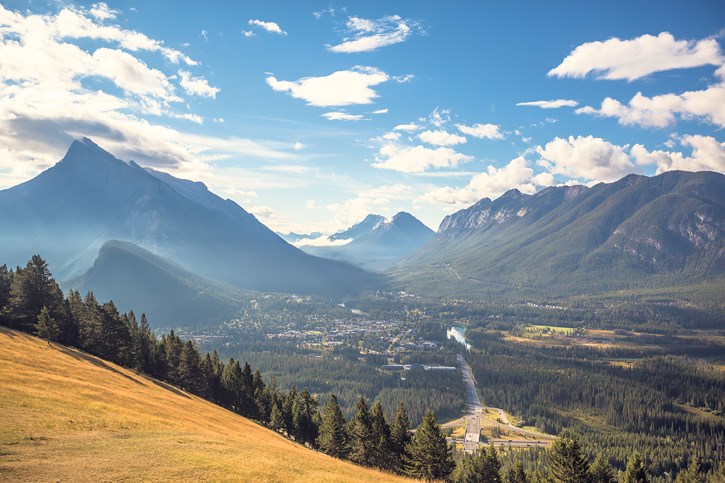Banff is edging closer to an end to commercial development under its legislated growth cap.
Banff is edging closer to an end to commercial development under its legislated growth cap.
Since 1998, the national park tourist town has been limited to an increase of 350,000 square feet of commercial development from the existing base established at the time.
To date, all of the 350,000 square feet has been handed out though a random lottery. As predicted, most commercial floor area space went to hotels, while the rest went primarily to retail uses such as restaurants.
"As of the end of 2017, we've seen 244,924 square feet fully utilized and constructed to date," said Randall McKay, the Town of Banff's planning and development director.
"There's about 105,000 square feet remaining to be built. We anticipate full commercial buildout by 2020, with the remaining floor area either under construction or finished."
In response to an onslaught of development pressure, the federal government capped commercial growth in Banff in 1998. Since then, development rights have been handed out through a random lottery system.
As of 2013, all commercial floor area had been allocated through the lottery process. Once allocated, an applicant is required to submit a development permit application within five years.
Darren Enns, the Town's development services manager, said this creates a five-year 'use it or lose it' system, allowing five years for a development permit application to be filed before the commercial allotment is returned to the municipality.
"Effectively in March of this year, we'll see expiry of all but one commercial development allotment," said Enns.
"Over time, some square footage has expired. Some applicants have chosen not to go ahead for whatever reason and it's gone back into the pool, all within the legislated process."
While there are some without development permits, others yet to be built, but with development permits, include the Husky gas station, Homestead Inn and mixed-use retail-restaurant development on Wolf Street at the former Timber's restaurant site.
Banff's train station redevelopment also has a commercial development allotment, but it does not expire until 2020 because of a partial allotment that went to that property in 2015.
"If you're unsuccessful in the lottery, but you've already received a partial in a previous lottery, then you're a priority for a subsequent allotment," said Enns. "The only partial was the train station and so they got the rest of the crumbs that came back to us."
McKay said he believes the built environment in Banff will continue to evolve and change over time long after Banff reaches full commercial buildout.
"In fact, we have seen this already for much of the past decade in light of restrictive limits to growth and an increasingly complex regulatory environment," he said.
There has been a considerable amount of reinvestment in commercial properties, much of which McKay said has, and was, needed to improve the design and performance of both businesses and buildings in new and innovative ways.
"This often means changes of use and redevelopment within the legislated growth cap," he said.
